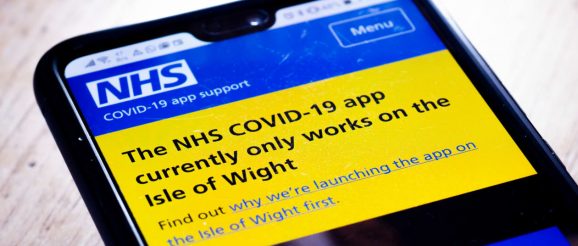Fears mount NHS innovation has been “sent packing to the basement” | IT PRO

When NHSX was created, there were fears it would step on NHS Digital’s toes, with Little more than two years later, Javid has retired both to the surprise of many, with fears that digital transformation in the NHS has taken a backseat.
Now the chief medical strategy officer at Numan, a digital healthcare company focused on men’s health, Shah explains: “Given they are all public sector agencies, what’s more important is this opportunity is used to set a strategy for the future and bring in capability and expertise that can lead technology change and transformation.”
“I do hope, this time, a more sensible approach is used, but history demonstrates that the process is rarely designed to prioritise the needs of the NHS,” he worries. “Where it can do even better is get more focussed on user research and improving user experiences. The national electronic referral system, for example, is still a chore for many users and that needs to change.”
Contrary to this move relegating innovation “to the basement”, he believes NHSE/I will continue to develop strategies for MedTech innovations. Qure, he adds, has great confidence the new body will drive innovation globally, especially given it’s reinforced with the expertise of both NHSX and NHS Digital.
The move could also be a chance to explore further opportunities with the private sector, suggests David Hancock, healthcare executive advisor at InterSystems and co-chair of INTEROpen. This organisation serves as a collaboration between individuals, the industry, standards organisations as well as health and social care providers, aiming to accelerate open standards for interoperability.
The NCCID comprises over 40,000 CT scans, MRIs and X-rays taken during the pandemic.
“There’s a need for clarity on the intentions concerning building new digital capabilities ifn-house versus buying solutions from external vendors,” he explains. “There are examples where building has perhaps not delivered the best results and, given the many advantages that buying could achieve, the NHS should consider the return-on-investment of buying versus building a central system.”
Digital transformation in the NHS, however, is way behind schedule, according to David Newell, head of health at professional services company Gemserv. He previously held NHS Trust Board responsibility for Information Technology, Clinical Audit and Medical Records. A fifth of Trusts in the NHS, for instance, still largely rely on paper, he says, leaving it “years behind the digital transformation of areas such as banking and travel”.
He believes, however, the NHS can make great strides if personalisation is made a top agenda item for digital transformation. “To make personalised, preventative healthcare a reality, the initiative must be clinically led at a national level, leveraging technology to enable system change,” he urges. “We need to pledge real, sustained investment with an absolute focus on measurable benefits delivery.”
The funding being directed into futureproofing IT systems, adds CTO of EMEA at Boomi, Mike Kiersey, is promising. He says: “If the NHS can efficiently modernise data practices in the coming months, it will be able to put a framework in place to become a digitally native system that can begin addressing the backlog of people waiting for crucial checks, tests and scans, and to help get waiting lists down.”
Overall, despite initial fears that digital innovation was to be relegated to an afterthought, there’s a collective welcoming for a move to fold NHSX and NHS Digital into NHSE/I. Professionals across health and technology, however, add the caveat that these lofty ambitions should be matched with the right budgets, the right talent, and the right timelines for health and social care IT modernisation.
Outlook 2022: Five priorities for boards, management & governance professionals
What’s driving the future of governance
Oracle analytics for dummies
Freedom from data overload
Content syndication isn’t dead, but your data processes might be
It’s a new (lead) generation
Seven leading machine learning use cases
Seven ways machine learning solves business problems
